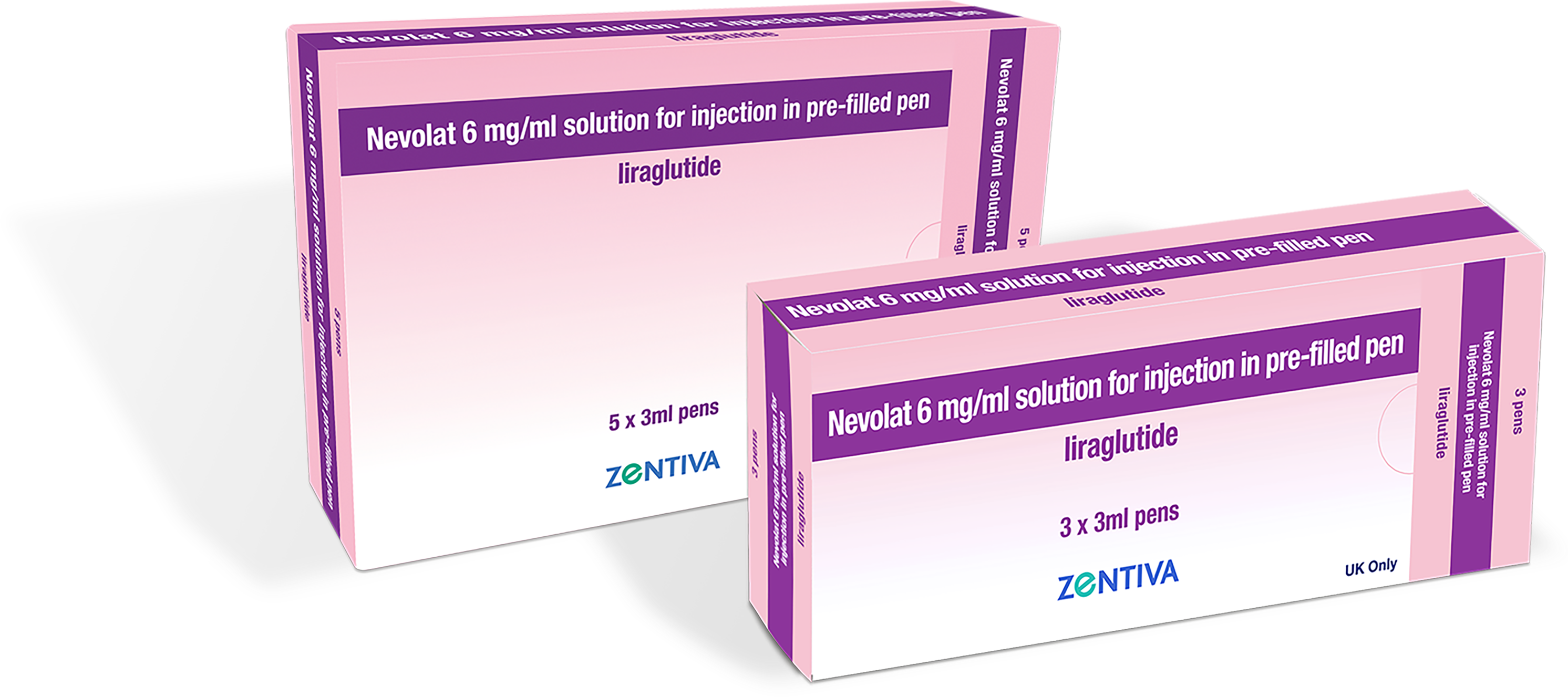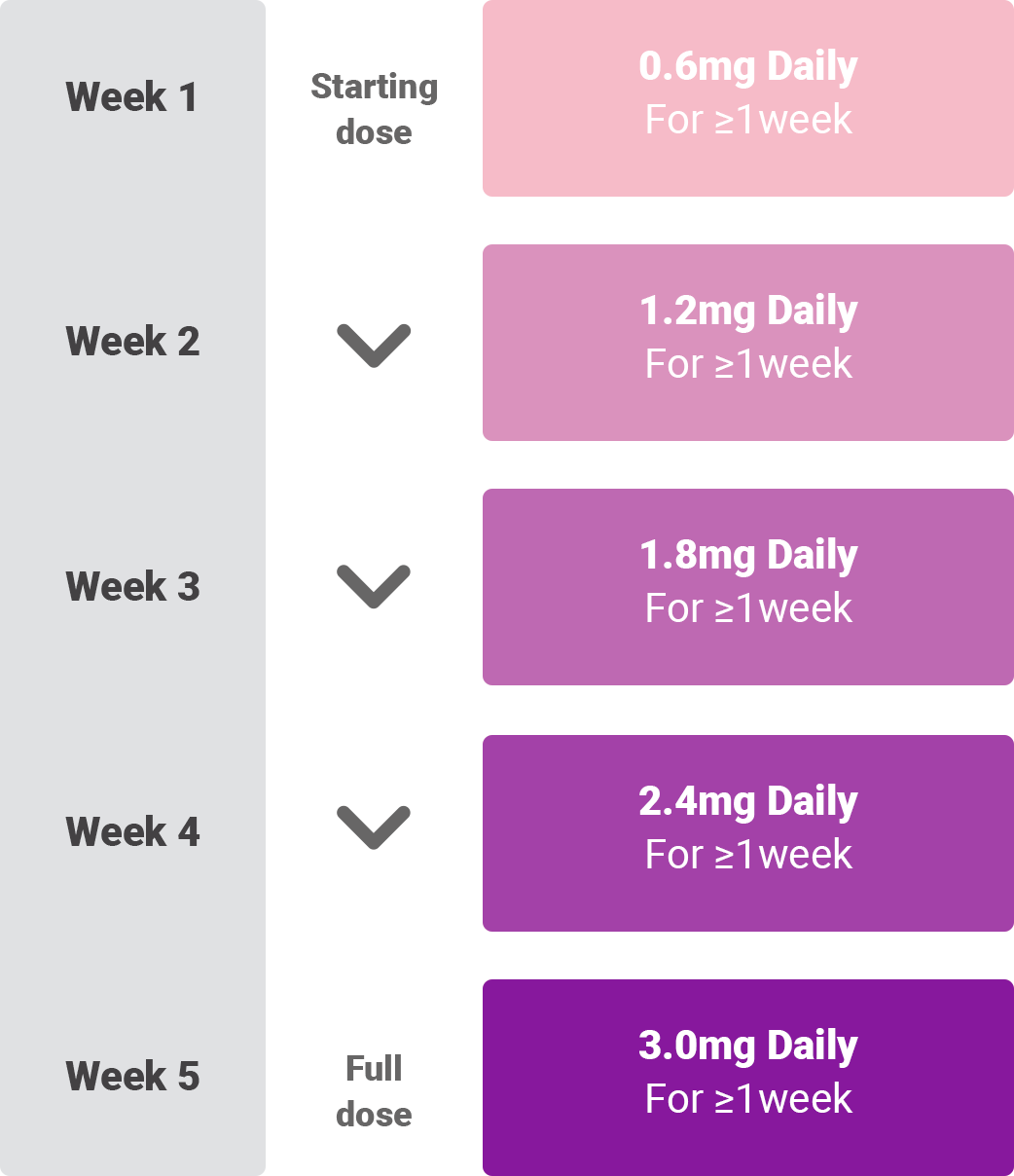How to administer: Dose titration
Nevolat® is designed to be self-administered by the patient. Their healthcare provider should demonstrate pen preparation and injection in the first instance, following that, they should refer to the Patient Information Leaflet for each self-administered injection.

Nevolat® is designed to be self-administered by the patient. Their healthcare provider should demonstrate pen preparation and injection in the first instance, following that, they should refer to the Patient Information Leaflet for each self-administered injection.
Adults and adolescents ≥12 to 18 years
The starting dose of Nevolat® is 0.6 mg once daily. The dose should be increased in increments of 0.6 mg, up to 3.0 mg once daily, with at least one-week intervals to improve gastrointestinal tolerability. If escalation to the next dose step is not tolerated for two consecutive weeks, consider discontinuing treatment. Daily doses higher than 3.0 mg are not recommended.1
Dose titration

Missed doses
If a dose is missed within 12 hours from when it is usually taken, the patient should take the dose as soon as possible. If there is less than 12 hours to the next dose, the patient should not take the missed dose and resume the once-daily regimen with the next scheduled dose. An extra dose or increase in dose should not be taken to make up for the missed dose.1
Patients with type 2 diabetes mellitus
Nevolat® should not be used in combination with another GLP-1 receptor agonist. When initiating Nevolat®, it should be considered to reduce the dose of concomitantly administered insulin or insulin secretagogues (such as sulfonylureas) to reduce the risk of hypoglycaemia. Blood glucose self-monitoring is necessary to allow a patient’s physician to decide whether adjustment of insulin or insulin-secretagogues doses are necessary (please refer to section 4.4 of the SmPC for further information).1

GLP-1 RA, glucagon-like peptide-1 receptor agonist; SmPC, Summary of Product Characteristics.
- Nevolat® (liraglutide) Summary of Product Characteristics.
000697588 | December 2024



